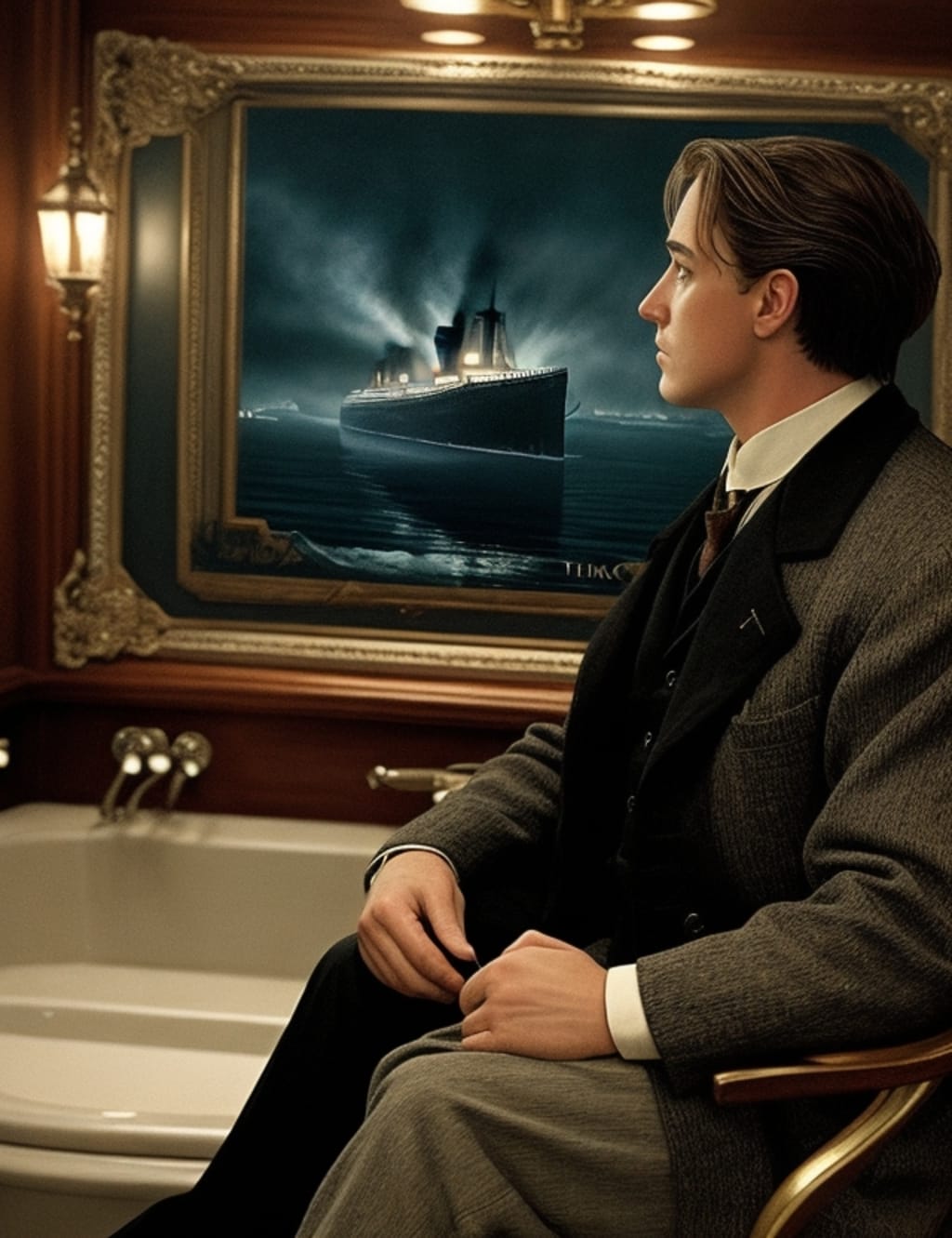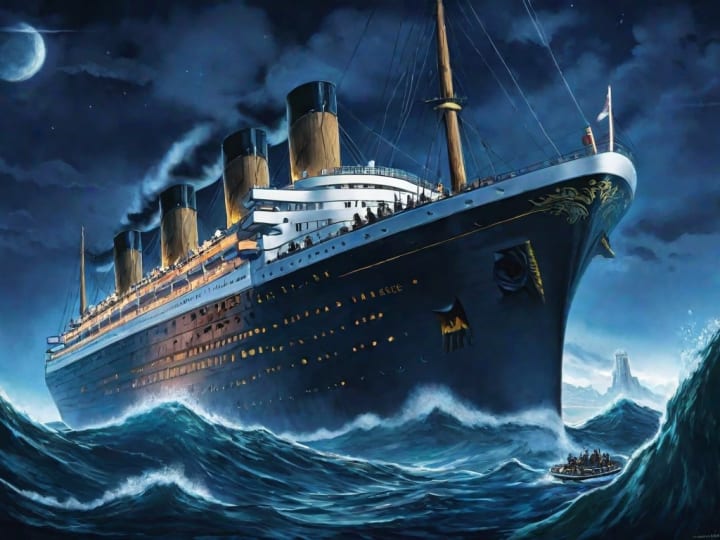Titanic? Truth Has Been Revealed!
New Discoveries About the Fateful Night

On April 14th, 1912, at 11:40 p.m., the RMS Titanic faced a catastrophic accident that ultimately led to its tragic demise. By 2:20 a.m. on April 15th, the grandiose ship, once deemed unsinkable, had vanished beneath the frigid waters of the Atlantic Ocean, claiming the lives of over 1,500 passengers and crew members. The widely accepted cause of this devastating disaster was the Titanic striking an iceberg. However, recent scientific findings have shed new light on this century-old mystery, challenging the iceberg theory.
The Titanic was an engineering marvel of its time, measuring 882 feet and 9 inches in length, 92 feet in width, and 175 feet in height, with a massive usable volume of 46,000 tons. It boasted four colossal smokestacks, each weighing 60 tons and towering 81.5 feet above the deck to prevent passengers from being showered in soot from the 100 tons of coal burned daily. The ship's construction was a monumental task that involved the tireless efforts of 3,000 workers, even if it took a grueling 26 months to complete.
This impressive feat of engineering came at a cost of $7.5 million, which, when adjusted for inflation, would equate to $166 million in 2016. Strikingly, it was more affordable than producing the iconic film "Titanic" in 1997, which had a budget of $200 million. The construction team encountered numerous challenges, and tragically, eight lives were lost, while 246 workers suffered injuries during the ship's construction.
Intriguingly, new findings have led us to question the conventional narrative of the Titanic's tragic demise, challenging the theory that an iceberg was solely responsible for its sinking. Investigative journalist Sonam Maloney, who spent over three decades studying the Titanic's fate, made a groundbreaking discovery. He stumbled upon a previously unpublished photograph showing a massive 30-foot long black mark on the ship's hull. This revelation emerged from an album of unseen photographs, offering glimpses into the ship's construction and preparation for its maiden voyage.
The blackened hull pointed to a fire that had burned unnoticed for approximately three weeks at an extraordinarily high temperature, compromising the ship's structural integrity. Metallurgy experts have affirmed that such conditions could have weakened the vessel's metal by up to 75%. It was this weakened metal that the iceberg ruptured, ultimately leading to the Titanic's tragic fate.

Intriguingly, those overseeing the Titanic's construction were aware of the fire and the risk it posed to the ship. Nevertheless, the ship's owners decided to proceed with the ill-fated voyage. The miners' strike during that time led to a coal shortage, making it impossible to fuel the Titanic for its journey. While other ships were canceled, the Titanic's tickets were already sold out, leading the owners to purchase all available coal, even scavenging from other ships that had canceled their trips.
To conceal the truth about the fire, the Titanic was strategically oriented so that the fire damage faced away from the docks, hiding the compromised metal from passengers. The ship set sail, carrying over 2,200 souls on board, while a fateful chain of events unfolded, ultimately leading to disaster.
Once aboard, the Titanic offered unparalleled luxury and opulence for its passengers. Modeled after the Ritz Hotel in London, the ship featured a grand staircase that descended seven of its ten decks. The interior was adorned with paintings, bronze cherubs, and oak paneling. It offered a wealth of facilities for first-class passengers, including a swimming pool with heated water, a Turkish bath, a gym, a squash court, and even a beauty salon. The first-class menu boasted thirteen courses, each expertly paired with the finest wines. The ship featured an onboard newspaper called the Atlantic Daily Bulletin and even accommodated the first-class passengers' beloved pets, offering a designated space for their care.
Despite these grand amenities, the Titanic faced a series of unfortunate circumstances that sealed its tragic fate. On the night of the disaster, the ship's binoculars, crucial for detecting threats, remained locked in a compartment with the only key holder, Second Officer David Blair, who was replaced at the last minute. The absence of these binoculars played a crucial role in the ship's collision with the iceberg.
Additionally, the Titanic was navigating at high speeds to maintain its schedule, pushing the vessel to its limits. The absence of adequate lifeboats further compounded the disaster. The ship was equipped with only twenty lifeboats, which could accommodate a mere fraction of the passengers. These decisions, driven by aesthetics and cost-saving, had fatal consequences.
The first lifeboat to depart, meant to carry 65 passengers, set sail with just 27 on board, leaving many lives behind. Meanwhile, the crew failed to conduct a lifeboat drill, and the evacuation process was slow and disorganized. Tragically, an avoidable mishap contributed to the catastrophe: Captain Edward John Smith's failure to initiate the drill and the passengers' reluctance to abandon the seemingly unsinkable ship.
In the desperate hours following the collision, the Titanic sent distress signals, but a nearby ship, the California, failed to respond due to a phenomenon known as light refraction. Mirages caused by light refraction distorted the signals and kept help at bay.
Ultimately, a chain of oversights, from inadequate lifeboats to the lack of binoculars and the missed lifeboat drill, culminated in this harrowing tragedy. The RMS Titanic, once an emblem of luxury and grandeur, met a catastrophic end due to a complex web of circumstances.
The Titanic's story continues to captivate the world, uncovering the many layers of negligence, misfortune, and fateful decisions that sealed its doom. As we delve deeper into this historical tragedy, it serves as a poignant reminder of the consequences of negligence and a stark illustration of how seemingly minor oversights can lead to devastating outcomes.
----------------------------------------
Your readership means a lot ❤️; if you liked it, please like and subscribe—it's free! Thank you for your support! 🌟❤️
About the Creator
Sophia Hayes
💰 Crafting Life's Stories, Poems, Fascinating Facts and Intriguing health, wealth facts await! 🌟 – A Journey Through Elegance.📚✒️
Subscribe for daily insights.
#Finance #Stories #Poetry #funfacts #WellnessWisdom 💚






Comments
There are no comments for this story
Be the first to respond and start the conversation.